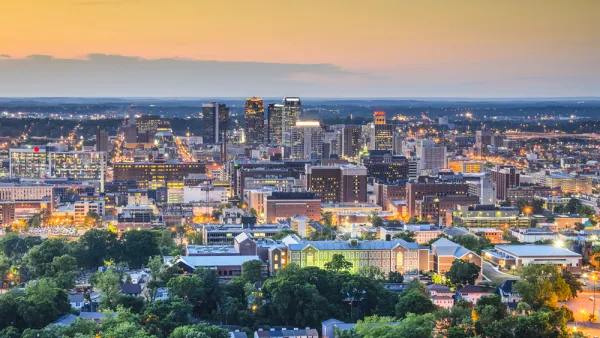Cities and states say the American Rescue Plan Act has been crucial to keeping the lights on during the pandemic, but some Republican lawmakers denounce spending on projects unrelated to COVID relief.

"A year after President Biden signed the $1.9 trillion American Rescue Plan Act into law, states and localities have used their $350 billion share of direct aid to provide Covid-19 vaccines, give workers on the frontlines of the pandemic extra pay, and to boost local economies." But as Kery Murakami reports, some lawmakers are questioning spending on projects that aren't pandemic-related. "For instance, states have earmarked the money to build monuments, create museums, tear down at least one abandoned university dormitory, and to carry out construction on courthouse buildings, according to a National Conference of State Legislatures database."
"This criticism has grown as more states report budget surpluses and as the GOP, during a midterm election year that will decide control of Congress, is seizing on the idea that the spending Democrats backed in the American Rescue Plan has contributed to a rising wave of inflation," writes Murakami. "The 152 cities and counties the National League of Cities, Brookings Metro and the National Association of Counties have been tracking have only decided what to do with 48.6% of their ARPA dollars."
Supporters of ARPA say it "has been instrumental in helping state and local governments weather the pandemic's economic fallout and for supporting their response to the health crisis" by replacing lost revenue and helping cities maintain essential services.
The source article details how states have spent ARPA funds so far and the rationales given for the projects.
FULL STORY: One Year Into ARPA Rollout, Spending Varies as Scrutiny Mounts

National Parks Layoffs Will Cause Communities to Lose Billions
Thousands of essential park workers were laid off this week, just before the busy spring break season.

Retro-silient?: America’s First “Eco-burb,” The Woodlands Turns 50
A master-planned community north of Houston offers lessons on green infrastructure and resilient design, but falls short of its founder’s lofty affordability and walkability goals.

Delivering for America Plan Will Downgrade Mail Service in at Least 49.5 Percent of Zip Codes
Republican and Democrat lawmakers criticize the plan for its disproportionate negative impact on rural communities.

Test News Post 1
This is a summary

Test News Headline 46
Test for the image on the front page.

Balancing Bombs and Butterflies: How the National Guard Protects a Rare Species
The National Guard at Fort Indiantown Gap uses GIS technology and land management strategies to balance military training with conservation efforts, ensuring the survival of the rare eastern regal fritillary butterfly.
Urban Design for Planners 1: Software Tools
This six-course series explores essential urban design concepts using open source software and equips planners with the tools they need to participate fully in the urban design process.
Planning for Universal Design
Learn the tools for implementing Universal Design in planning regulations.
EMC Planning Group, Inc.
Planetizen
Planetizen
Mpact (formerly Rail~Volution)
Great Falls Development Authority, Inc.
HUDs Office of Policy Development and Research
NYU Wagner Graduate School of Public Service





























